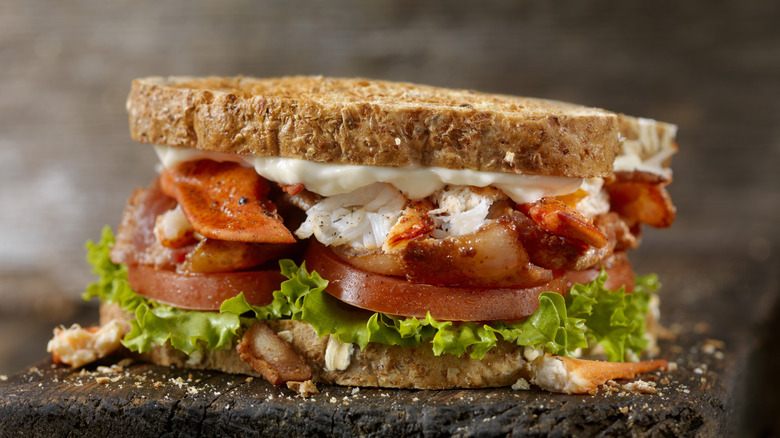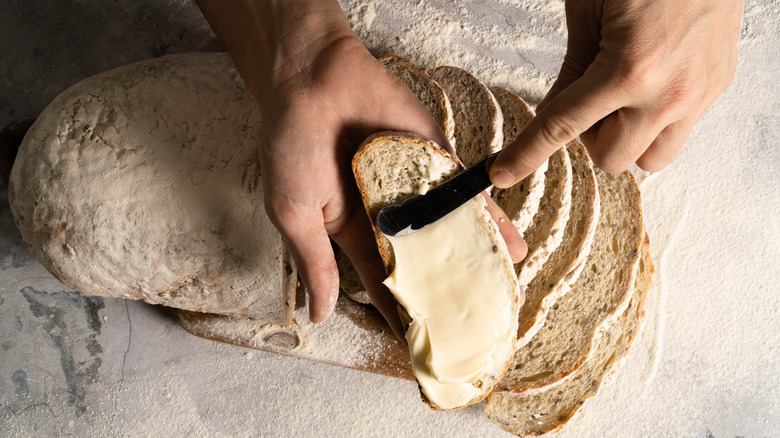Why Your Sandwiches Should Have Mayo On Both Slices Of Bread
There are many sandwich-making tips out there, from seasoning your veggies to strategic ingredient stacking. Perhaps the most important tip of all, though, is the one we recommend: To prevent a soggy, subpar sandwich, always spread mayo on both the top and bottom slices of bread.
Moisture is a natural factor of many ingredients that make a sandwich great. Ingredients like tomatoes, cucumbers, and pickled onions are all wet foods, and even lower-moisture ingredients like leafy greens are often dressed in watery vinegar. Bread readily absorbs moisture from these toppings, which is why you must add a barrier between wet ingredients to protect it.
Mayonnaise is a perfect tool for this purpose; not only does its creamy consistency improve the flavor and texture of sandwiches, but it also repels water. This is because the oil in mayonnaise is hydrophobic, meaning its molecules don't mix with water. As such, by layering the mayonnaise in between your bread and any other ingredients, you create a sort of waterproof wall that keeps your bread dry and the moisture where it belongs.
Other ways to protect your bread
If mayonnaise is not your preferred condiment, there are plenty of other sandwich spreads that can keep your bread dry and sturdy. The important part is to select an option that contains a high amount of hydrophobic ingredients — usually either oil or any another fat. Butter and cream cheese are some excellent alternatives, as is pesto with its winning combination of pine nuts, olive oil, and parmesan cheese. Consider slathering on your favorite nut butter or some fresh avocado for vegan or dairy-free options.
A protective spread isn't the only way to keep your sandwich intact, of course. Choosing the right sandwich bread for your selected fillings, as well as taking the time to toast that bread, can also help. It may be an extra step, but by using these tips, you can greatly improve the likelihood of having a structurally sound, delicious sandwich.

